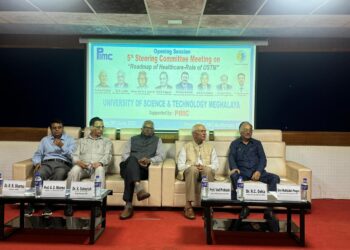Leading a sustainable lifestyle has now become the need of the hour due to the urgency posed by climate change, the threat of global warming and diminishing natural resources. As per a 2016 Statista report ( a market and consumer data company) ,India generates 13 percent of the global waste and is projected to increase it to 543 million tons in 2050. For a greener and cleaner environment, collective and individual efforts should be initiated right now. All over the world, social organisations like Grow-Trees.com are already at the forefront of planting trees and spreading awareness about the importance of preserving wildlife habitats and preserving biodiversity and you too can take care of Mother Earth because no effort is too small when it comes to environmental preservation.
Monitor carbon emissions
A 2020 BBC report states that road vehicles like cars, trucks, buses and motorbikes account for nearly three quarters of transport related greenhouse gas emissions. The Council of Energy, Environment, and Water in its India Transport Energy Outlook 2022 has stated that the number of four-wheelers will increase from nine percent in 2020 to 45 percent in 2050. This means more toxic emissions and to counter this, many carpooling and bike pooling apps are now active in India to encourage people to join. Decrease in the use of private transport will also reduce the requirement for fuel, curb toxic emissions and lead to a healthier environment.
Switch to green architecture
Green buildings are energy efficient, employ recycled materials and often incorporate rainwater harvesting, composting pits, green walls and roofs, greywater treatment and solar panels in the design. According to a 2020 UNEP (The United Nations Environment Programme) article, emissions from building construction hit their highest-ever level in 2019, “moving the sector further away from fulfilling its huge potential to slow climate change and contribute significantly to the goals of the Paris Agreement.” There is hence an urgent need to switch to sustainable building practices that maximise the use of natural light, ventilation and use materials that are contextual to the topography and the climate.
Cultivate mindful consumption
How many of us know that it takes 1,000 litres of water to produce a chocolate bar and that the textile industry emits over 1.22 billion metric tons of carbon dioxide into the atmosphere per year? Less consumption means less waste generation, emissions and landfills. After the COVID-19 pandemic, there is more global awareness regarding the linkages between environmental degradation and health markers. Consumers are also becoming more aware of the need for sustainable brands , slow fashion and ethically made products. To manage your consumption patterns responsibly while shopping, look for eco-labels that are kind to the earth.
Plant indigenous vegetation
Native plants and indigenous plants conserve biodiversity, require less water and fertilizer since they have already adapted to the soil. Pesticides are one of the biggest pollutants and native plants can, even without their use, naturally protect themselves from diseases and insects. Most animals rely on native plants for food and through this process, native plants help in the restoration of natural habitats. They also prevent soil erosion. Grow-Trees.com , through various projects, has been planting millions of indegenous tree species across India for the betterment of the environment and as individuals, we can do the same.
Recycle as much as possible
Reports suggest that a tonne of recycled paper saves 17 trees, 41000 kWh of electricity, and 31,780 litres of water. Recycling paper and wood, plastics, metals, and glass will help in replenishing natural resources. Just as lower consumption reduces production and the demand for raw materials, recycling also works towards making the most of available resources. It is imperative to find a way to minimise the use of single-use plastics and recycle the existing waste to prevent it from reaching the river bodies and oceans where they can potentially harm marine life.









